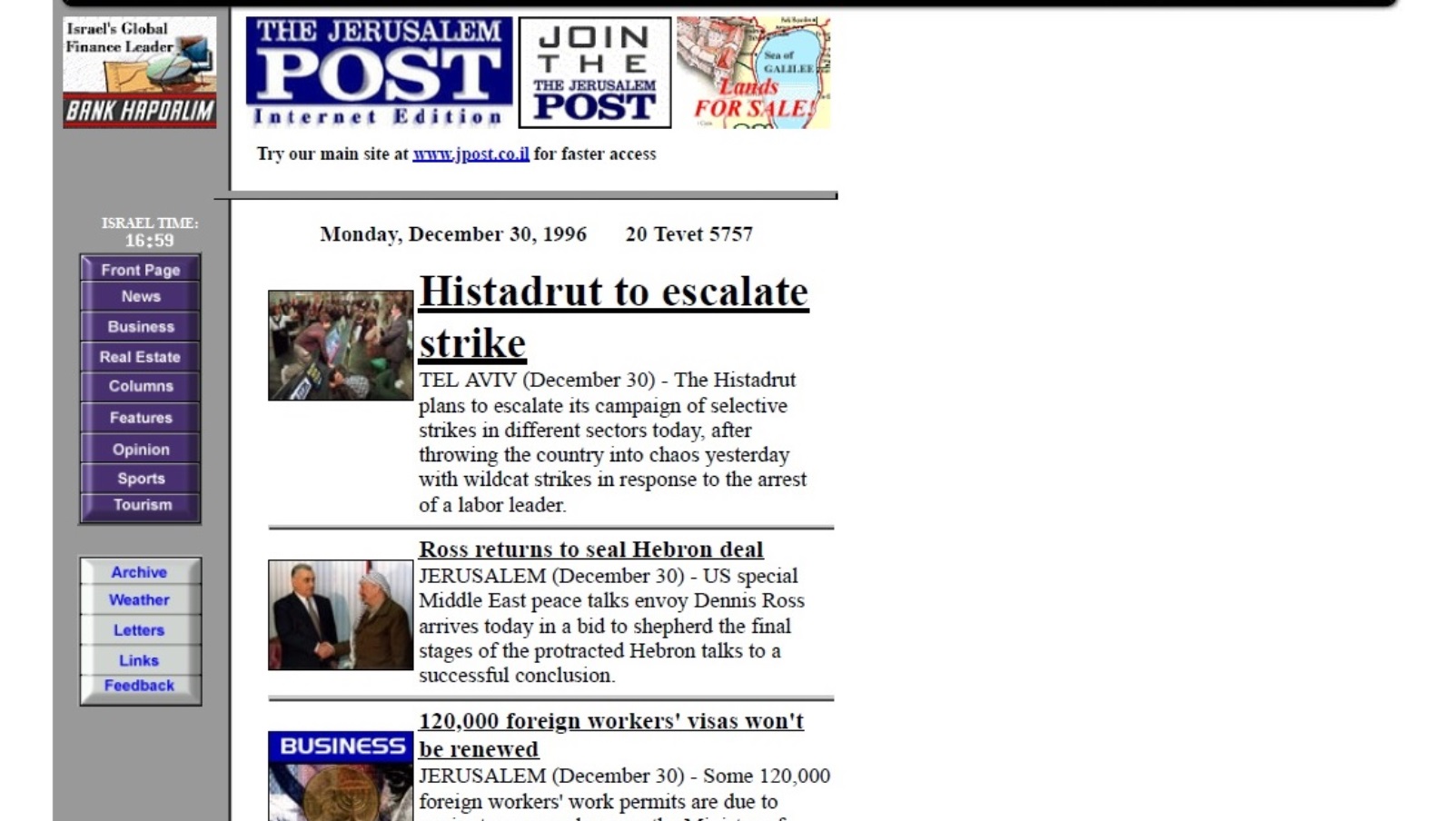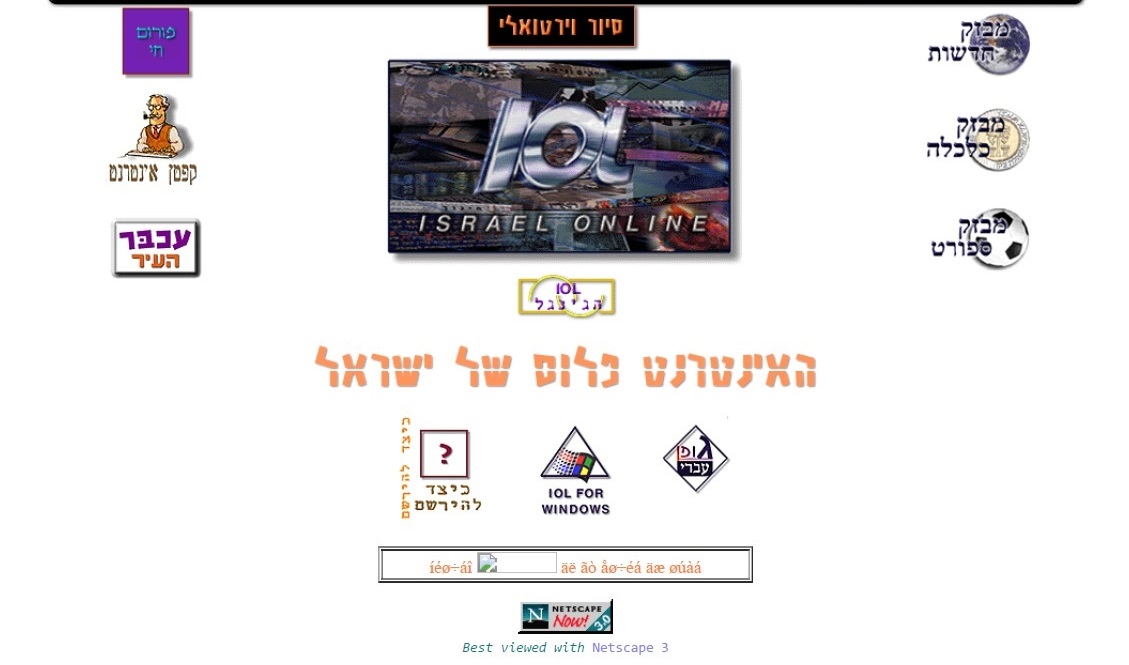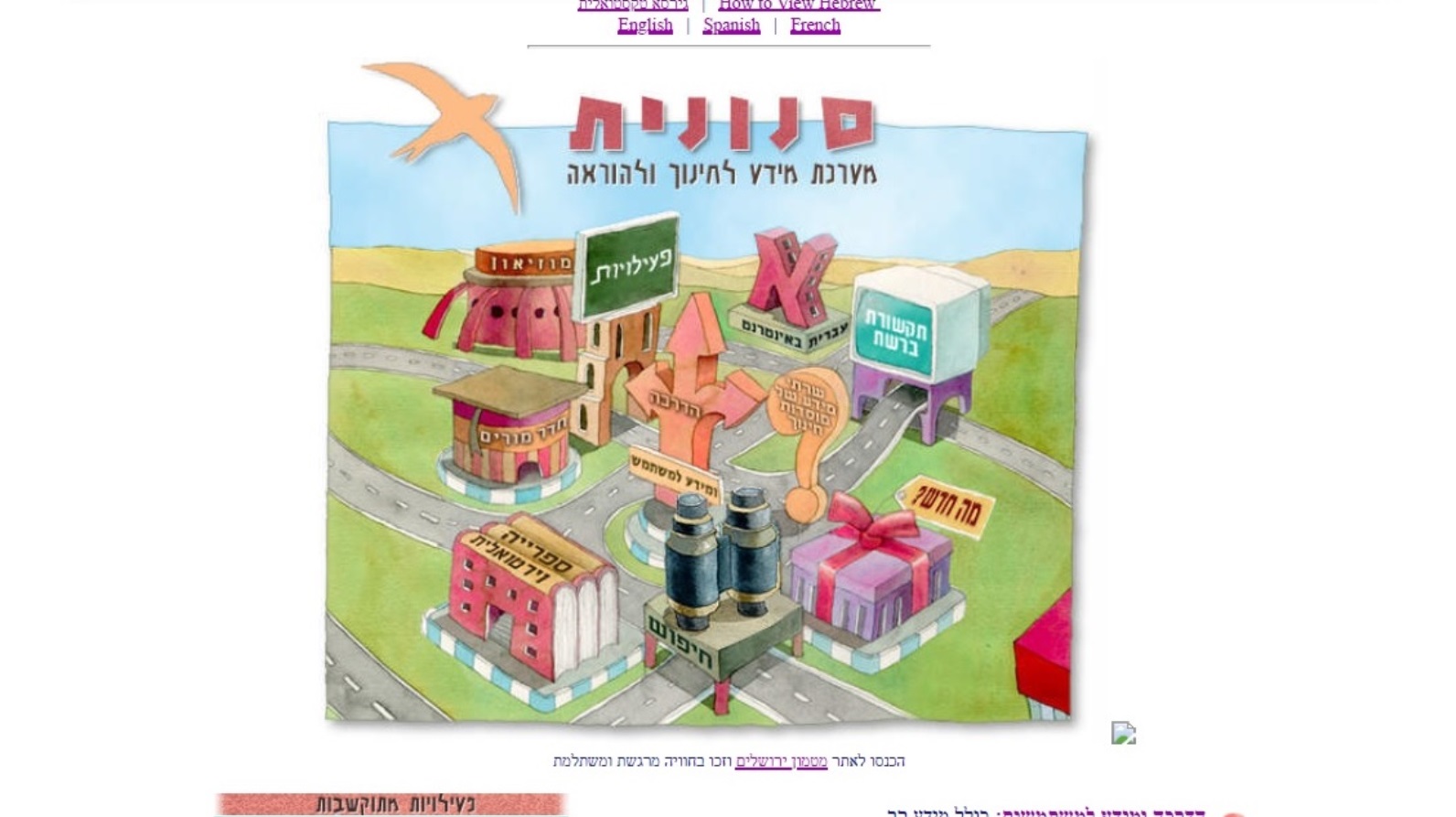Where do old websites go to die? Publicly available Internet has been part of modern life for almost three decades. Israel joined the World Wide Web in 1994 and, like its counterparts around the world, began producing an endless stream of ephemeral content.
The fact that bits and bytes are so easily changeable — and erasable — is troubling to historians. For this reason, since 1996, the Wayback Machine has been archiving cached pages of websites with the intent of capturing and archiving content that otherwise would be lost whenever a site is changed or closed down.The vision of the Machine’s creators is to archive the entire Internet, as part of the Internet Archive, which collects digital content and digitizes analog content for sharing freely.
Mark Graham, director of the Wayback Machine at the Internet Archive,will be one of the featured speakers at a unique international conference, “Web Archiving: Best Practices for Digital Cultural Heritage” to be held April 29-30 at the National Library of Israel in Jerusalem.
The conference – the first of its kind in Israel – aims to raise awareness about web archiving in Israel, and to address the importance of web archiving and web archive research for digital cultural heritage.
Leading researchers and practitioners in the field of web archiving and web historical research from eight countries will examine topics ranging from how the French Web Archives are using the World Wide Web to preserve the recollections of North African immigrants, to the workings of religious networks in the archived Web, to what the best practices for the Israeli Web Archive might be.
The event also includes an online interactive exhibition summarizing milestones from 20-plus years of the Israeli web, using snapshots from the Internet Archive.
To supplement the exhibition, which focuses on Hebrew language websites only, ISRAEL21c presents a selection of the English-language Israeli websites that preceded them.

Because in the early days of the World Wide Web, the only available font was Latin (the English alphabet), the first Israeli websites to go online in 1996 were Globes – then called Israel’s Business Arena – and the Jerusalem Post. (Note: The author was present at the inception of both websites.)

The Ha’aretz group soon came online with IOL (Israel Online), featuring the popular “Captain Internet” column, a focal point for the local cyber community.

Israel’s Knesset was the first Hebrew-language Israeli government website and was intended to provide information to the general public about the Knesset building, Knesset members, laws, past Knessets and the workings of Israel’s seat of government, including state budgets, agendas, broadcasts of proceedings, protocols and lawmakers’ e-mail addresses. In addition, the site made a bold but failed attempt at online sharing of legislative processes with the public.

Israeli academics were already online prior to 1994 as part of the BITNET cooperative university computer network. Following the Ministry of Communications’ regulation enabling every citizen (not only those with university connections) to connect to the Internet, the School of Education at the Hebrew University of Jerusalem established the Snunit Center for the Advancement of Web Based Learning. Snunit continues to be the largest educational web portal in Israel.

As the Internet developed, directories were necessary to index and search content. Tapuz was Israel’s first such guide.
“Web 2.0” was the buzzword in the early 2000s, referring tointeractive websites, social-networking sites and online commerce. Israel – a society where 2 degrees of separation is the norm – got into social networking early on in 2001 with Hevre, a site for connecting old friends.

Also in 2001, ISRAEL21c made its first appearance. The site included nascent interactive features such as online polling, and although it looks simple compared to the present-day site, the message – presenting Israeli achievements that benefit our world – still rings loud and clear.

The conference, “Web Archiving: Best Practices for Digital Cultural Heritage,” organized by the National Library of Israel and the Open Media & Information Lab (OMILab) at the Open University, will be held April 29-30 at the National Library of Israel in Jerusalem.
For more information, click here.
















